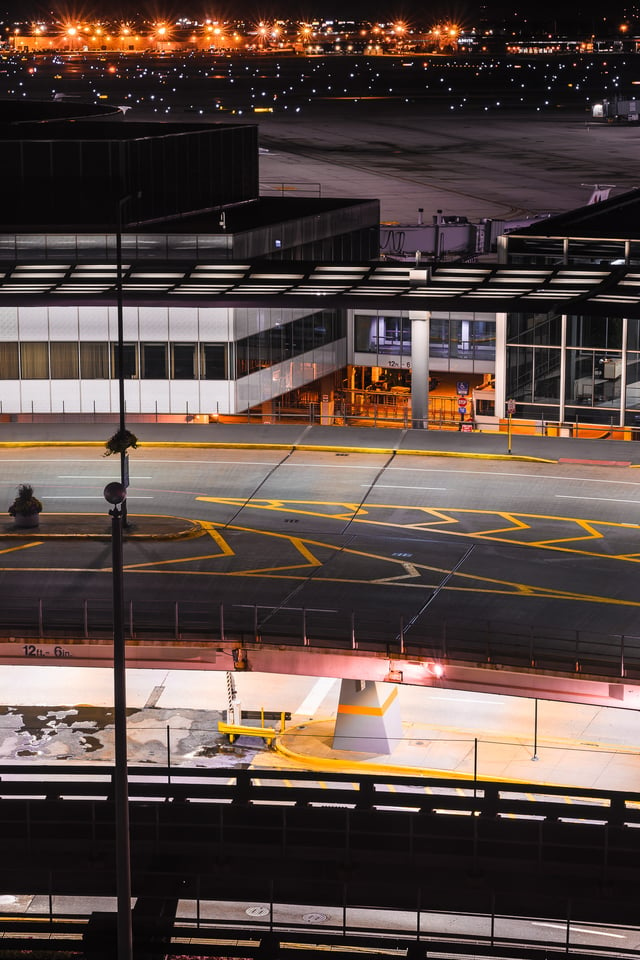تعدد استخدامات العدسات الأولية
The Versatility of Prime Lenses
عدسات التكبير مريحة، كما يعلم الجميع. أتخيل أن الغالبية العظمى منا بدأوا التصوير باستخدام عدسة بسيطة مكونة من 18-55 - أعلم أنني فعلت ذلك، واستخدمتها لالتقاط بعض الصور المفضلة لدي. ومع ذلك، لم يبدو الأمر مناسبًا أبدًا لأسلوبي في التصوير الفوتوغرافي. كانت عدستي الأولية الأولى هي عدسة Nikon مقاس 105 مم f/2.8G VR، وهي عدسة رائعة حقًا. في ذلك الوقت، لم أقم مطلقًا بمحاولة التصوير الفوتوغرافي الماكرو. ليس من المبالغة القول إن الماكرو 105 ملم فتح لي عوالم جديدة، وكانت حدته لا تصدق. لقد اكتشفت العالم السحري للعدسات الأولية.
ننتقل سريعًا إلى اليوم، حيث أقوم بالتصوير باستخدام ثلاث عدسات فقط، جميعها أولية: Nikon 24mm f/1.4G، وSigma 50mm f/1.4 Art، وNikon 105mm f/2.8G VR. في أغلب الأحيان، أقوم بتصوير المناظر الطبيعية والمدن والمشاهد الكلية، وقد وجدت هذا الثلاثي رائعًا بالنسبة لاحتياجاتي. يقول الناس دائمًا أن التكبير/التصغير أكثر تنوعًا وملاءمة من العدسات الأولية، وهذا صحيح في بعض النواحي. ومع ذلك، يمكن أن تكون العدسة الأساسية أكثر مرونة مما قد تبدو في البداية.
كاميرا نيكون D7000 + 24 مم f/1.4 @ 24 مم، ISO 200، 1/80، f/2.5
Zoom lenses are convenient, as everyone knows. I’d imagine that the vast majority of us started our photography with a simple 18-55 kit lens – I know I did, and I used it to take some of my favorite photos. However, it never seemed like a good fit for my style of photography. My first prime lens was the Nikon 105mm f/2.8G VR macro, a truly fantastic lens. At the time, I had never attempted macro photography. It is no exaggeration to say that the 105mm macro opened new worlds for me, and its sharpness was unbelievable. I had discovered the magical world of prime lenses.
Fast forward to today, where I’m shooting with just three lenses, all primes: the Nikon 24mm f/1.4G, the Sigma 50mm f/1.4 Art, and the Nikon 105mm f/2.8G VR. For the most part, I photograph landscapes, cities, and macro scenes, and I have found this trio to be amazing for my needs. People say all the time that zooms are more versatile and convenient than prime lenses, which, in some ways, is true. However, a prime lens can be more flexible than it may seem at first.
 NIKON D7000 + 24mm f/1.4 @ 24mm, ISO 200, 1/80, f/2.5
NIKON D7000 + 24mm f/1.4 @ 24mm, ISO 200, 1/80, f/2.5
The Versatility of Prime Lenses
عدسات التكبير مريحة، كما يعلم الجميع. أتخيل أن الغالبية العظمى منا بدأوا التصوير باستخدام عدسة بسيطة مكونة من 18-55 - أعلم أنني فعلت ذلك، واستخدمتها لالتقاط بعض الصور المفضلة لدي. ومع ذلك، لم يبدو الأمر مناسبًا أبدًا لأسلوبي في التصوير الفوتوغرافي. كانت عدستي الأولية الأولى هي عدسة Nikon مقاس 105 مم f/2.8G VR، وهي عدسة رائعة حقًا. في ذلك الوقت، لم أقم مطلقًا بمحاولة التصوير الفوتوغرافي الماكرو. ليس من المبالغة القول إن الماكرو 105 ملم فتح لي عوالم جديدة، وكانت حدته لا تصدق. لقد اكتشفت العالم السحري للعدسات الأولية.
ننتقل سريعًا إلى اليوم، حيث أقوم بالتصوير باستخدام ثلاث عدسات فقط، جميعها أولية: Nikon 24mm f/1.4G، وSigma 50mm f/1.4 Art، وNikon 105mm f/2.8G VR. في أغلب الأحيان، أقوم بتصوير المناظر الطبيعية والمدن والمشاهد الكلية، وقد وجدت هذا الثلاثي رائعًا بالنسبة لاحتياجاتي. يقول الناس دائمًا أن التكبير/التصغير أكثر تنوعًا وملاءمة من العدسات الأولية، وهذا صحيح في بعض النواحي. ومع ذلك، يمكن أن تكون العدسة الأساسية أكثر مرونة مما قد تبدو في البداية.
كاميرا نيكون D7000 + 24 مم f/1.4 @ 24 مم، ISO 200، 1/80، f/2.5
Zoom lenses are convenient, as everyone knows. I’d imagine that the vast majority of us started our photography with a simple 18-55 kit lens – I know I did, and I used it to take some of my favorite photos. However, it never seemed like a good fit for my style of photography. My first prime lens was the Nikon 105mm f/2.8G VR macro, a truly fantastic lens. At the time, I had never attempted macro photography. It is no exaggeration to say that the 105mm macro opened new worlds for me, and its sharpness was unbelievable. I had discovered the magical world of prime lenses.
Fast forward to today, where I’m shooting with just three lenses, all primes: the Nikon 24mm f/1.4G, the Sigma 50mm f/1.4 Art, and the Nikon 105mm f/2.8G VR. For the most part, I photograph landscapes, cities, and macro scenes, and I have found this trio to be amazing for my needs. People say all the time that zooms are more versatile and convenient than prime lenses, which, in some ways, is true. However, a prime lens can be more flexible than it may seem at first.
 NIKON D7000 + 24mm f/1.4 @ 24mm, ISO 200, 1/80, f/2.5
NIKON D7000 + 24mm f/1.4 @ 24mm, ISO 200, 1/80, f/2.5








تعليق